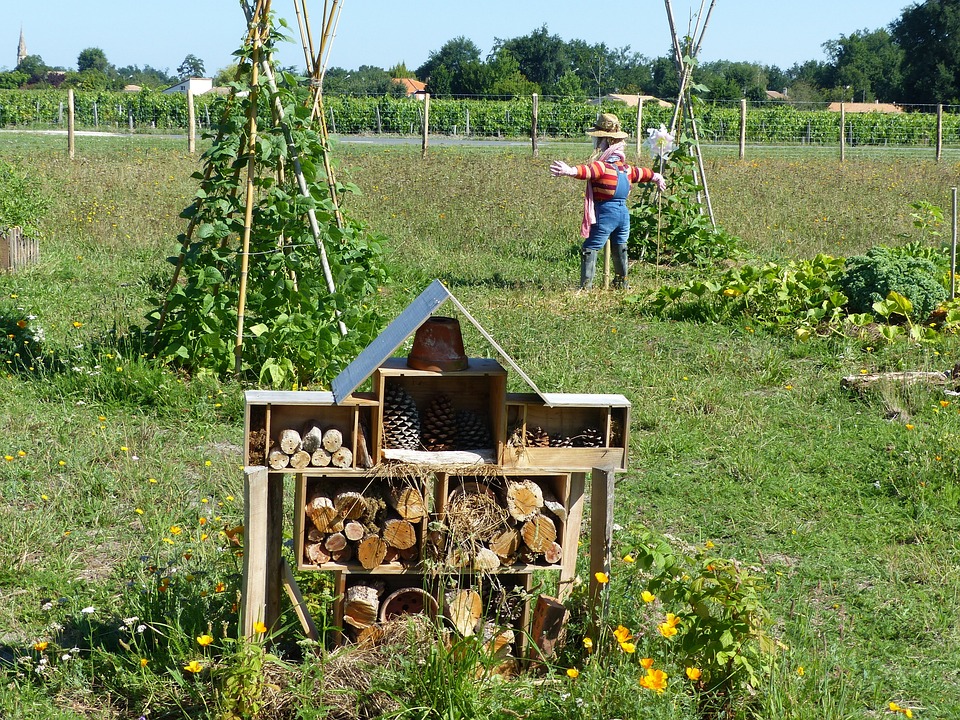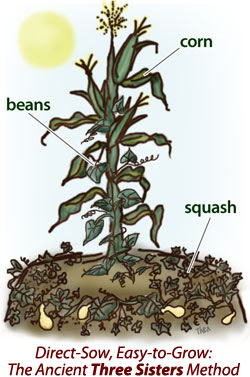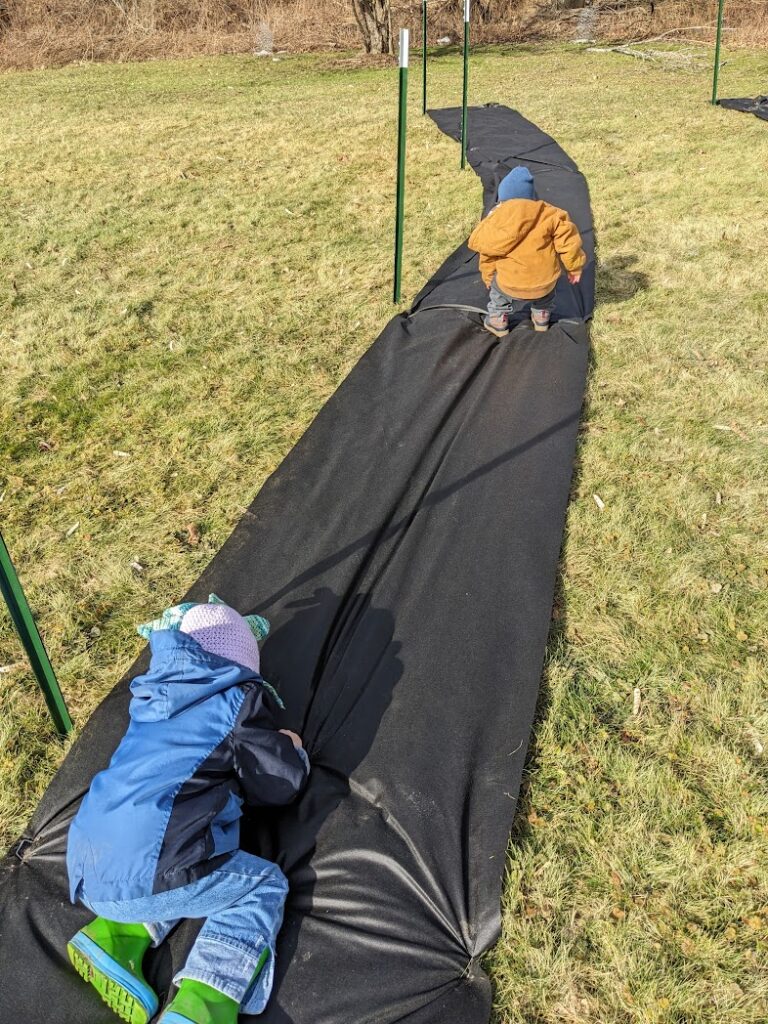What is a permaculture guild?

A permaculture guild is a concept that describes the organization of multiple compatible species of plants together in a group. The premise is that different plants occupy different niches. By planting various species together, you can utilize the maximal amount of sunlight and produce the maximal amount of crop.
For example, the classic annual guild has been passed down through generations of Native Americans. “Three sisters” is an guild composed of corn, squash, and beans or peas. The way the plants work together is really interesting, and perhaps deeper than even the initiated realize.
The “three sisters,” corn, squash, and peas, all occupy different areas of three dimensional space. The corn grows straight and tall. The squash spreads and covers the ground. The beans (or peas) use the corn stalk as a trellis to grow upwards.
The beans don’t impose on the corn by growing upwards, and the squash doesn’t impose on the corn by growing on the ground. Instead, the squash blocks weed pressure around the corn stalk, and the beans (which are a nitrogen fixer) provide readily available nutrients to the corn and the squash. The corn in turn provides a trellis for the beans. Each of the plants is an ally to the others, and the whole system is healthier for it.

In like manner, permaculturists marry various species together to enjoy the symbiotic relationships between these plants. But with so many plants to plant, choosing which can get overwhelming.
How do we build a permaculture guild?
the best way to start is to choose a plant you want purely for its own sake
Obviously, the best way to start is to choose a plant you want purely for its own sake. Do you want an apple tree? Do you want a raspberry bush? Are you dying for some rhubarb? Maybe one of these plants intrigue you?
Once you’ve selected a plant that you know will provide you with a benefit, use your permaculture brain to start to imagine where there will be niches that you can incorporate other species that will fill in the gaps.
Don’t worry. The specifics are coming.
A list of Permaculture guild niches you can fill
- Overstory Tree – Usually your keystone, this would be a tree that is big enough to shade the others, and tall enough to (generally) not be overshadowed by other trees
- Small, or shade loving tree or shrub – Smaller shade tolerant trees like pawpaws, hazelnuts, blackberries or raspberries, or currants
- Bush – somewhat self-explanatory, often times a bushy plant (hazel, josta, currant, blueberry, gooseberry, honeyberry, etc.) will thrive next to an overstory tree especially if planted to the south side. They can also prevent winter sunscald on the bark of the overstory tree
- Vining Crop – This one needs to be used with caution–vining crops are very capable of overrunning and dominating the overstory tree. Grapes and hardy kiwi are both notorious for this. You can keep them trimmed, but it’s a full time job.
- Ground Cover – lots of herbs fill this role, like oregano, mint, thyme, etc. This is also a great opportunity to plant a flowering species that attracts beneficial insects but doesn’t necessarily have it’s own crop.
- Beneficial Insect Attractant – many books cover this topic and it’s too broad for me to broach here. I’m particularly fond of Gaia’s Garden, but there are others that go even more in depth.
- Nitrogen fixer – some of my favorites include seaberry/seabuckthorn, which produces fruit, and river locust (amorpha fruiticosa) which is a beneficial insect attractant with a beautiful flower that stays relatively low to the ground and tolerates trimming.
- Pest repellant – smelly plants like garlic, onions, mint, and herbs reduce pressure from deer and voles.
- The South Side – It’s the sunnier side in our northern hemisphere. Plant something that will grow to be a bit shorter than your overstory, or a tree that you want to eventually take over the space.
- The North Side – It’s the shadier side! A shade tolerant shrub or successor to the present overstory.
- Succession overstory – One example given to me by Sean from edibleacres is a pawpaw, which loves shade during its early years, as a successor to a peach tree, which tends to produce heavily for a few years and then succumb to disease.
- Rhizome Blocker – plants like horseradish, comfrey, and rhubarb, with thick, aggressive roots, can block the spread of grass, which may be important depending on the other plants in the permaculture guild.
Enough theory. Let’s build a permaculture guild.
At last! You’ve chosen your keystone–you want to plant a seaberry. Guess what!? You’ve already filled the nitrogen fixer niche. You overachiever you! Now you can use the list of niches to see where you might fill in gaps. On the south side, you could plant a honeyberry. That fills the bush gap as well. You could toss a currant on the north side. Currants have a tendency to deflect deer browse, and seaberries and honeyberries are already very resistant, so you can consider that niche filled as well.
To go the extra mile, you could plant a couple garlic bulbs around the base of each new bush or tree to discourage voles. Finally, on both the east and west, I’ll add golden marguerite (anthemis tinctoria). Not only is it a pretty flower which adds visual appeal, it’s a beneficial insect attractant which draws ladybugs, tachinid flies, hoverflies, parasitic wasps, and lacewings.

As it stands, this is a fine guild. As you continue in your permaculture journey, you may find new niches (my list is by no means complete). Permaculture guilds seem like a static concept to a novice, (perhaps the “perma” in “permaculture guild” is misleading) but they’re surprisingly dynamic in practice, especially over a period of years. Don’t be afraid to get in there and experiment even on an established guild.
The Permaculture Guild – Conclusion

It must be remembered that guilds are not a simple 1-2-3 prescription. On the contrary, guilds are a flexible, dynamic, and generally unfussy collaboration of mutually beneficial plant species. Even plants considered competitive with one another can thrive next to one another. Undeniably however, giving a guild a bit of thought and iterating through your list of niches can help you maximize its utility.
In the future, I plan to do more discussions of guilds. I’ll write out more theoretical guilds, and as I’m planting, I’ll post the guilds that I’ve built myself and critique them–what needs improving? What has worked well? Hope you stick around to check it out.
Leave a Reply